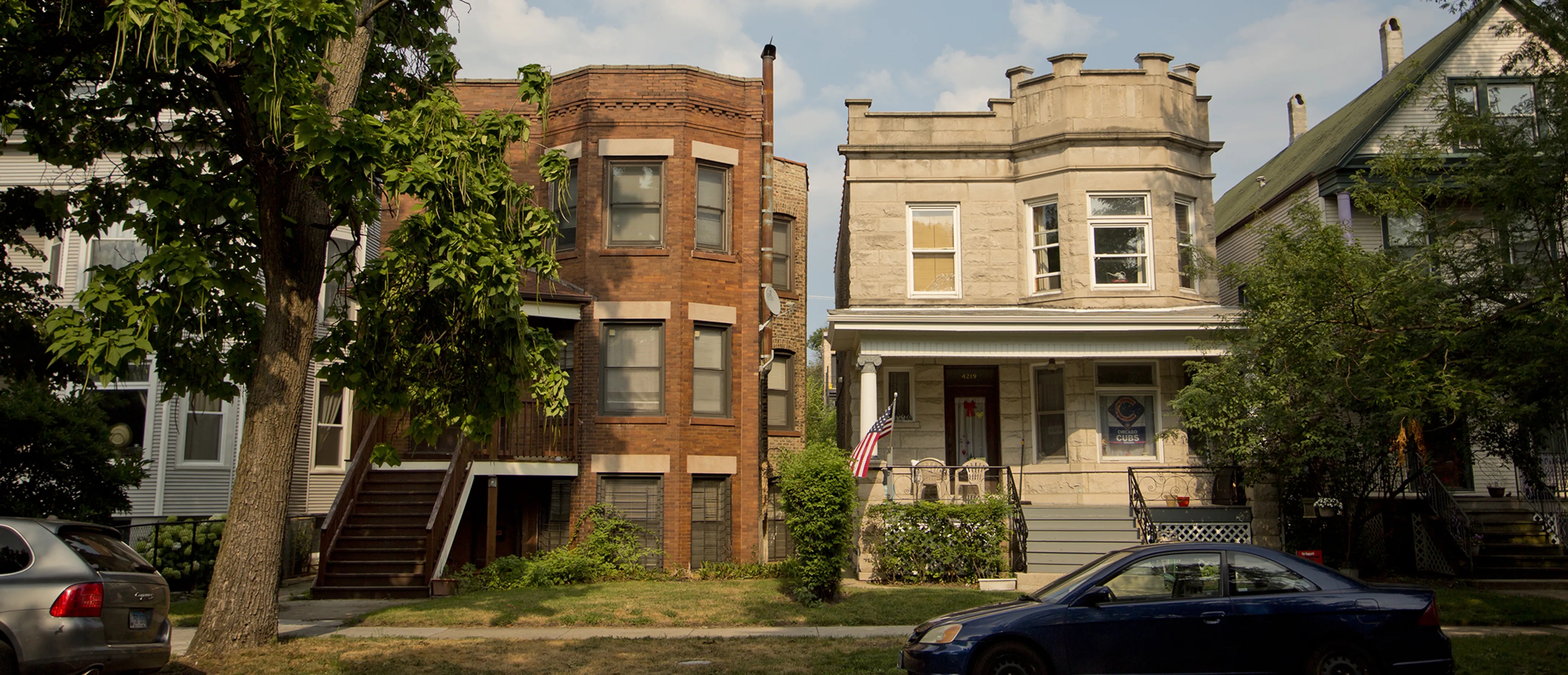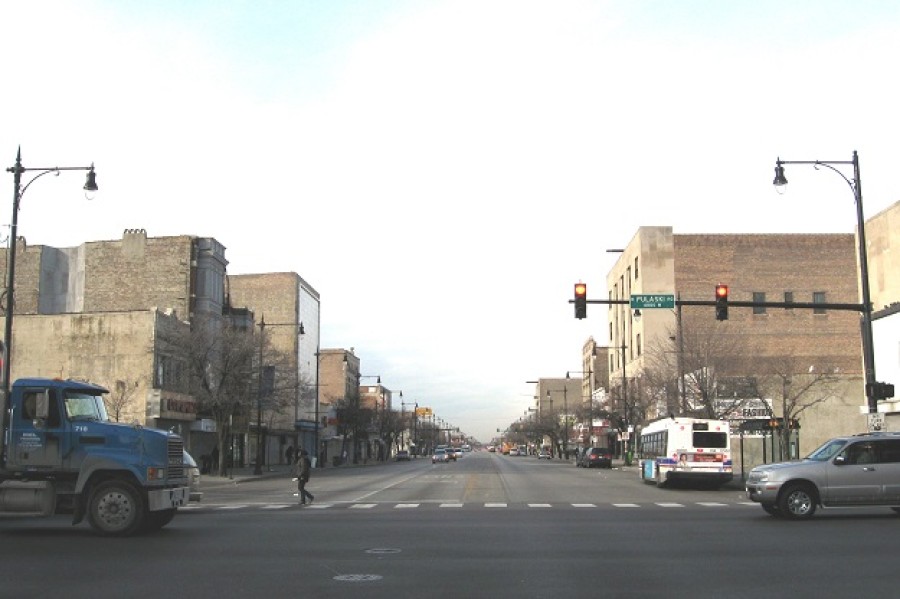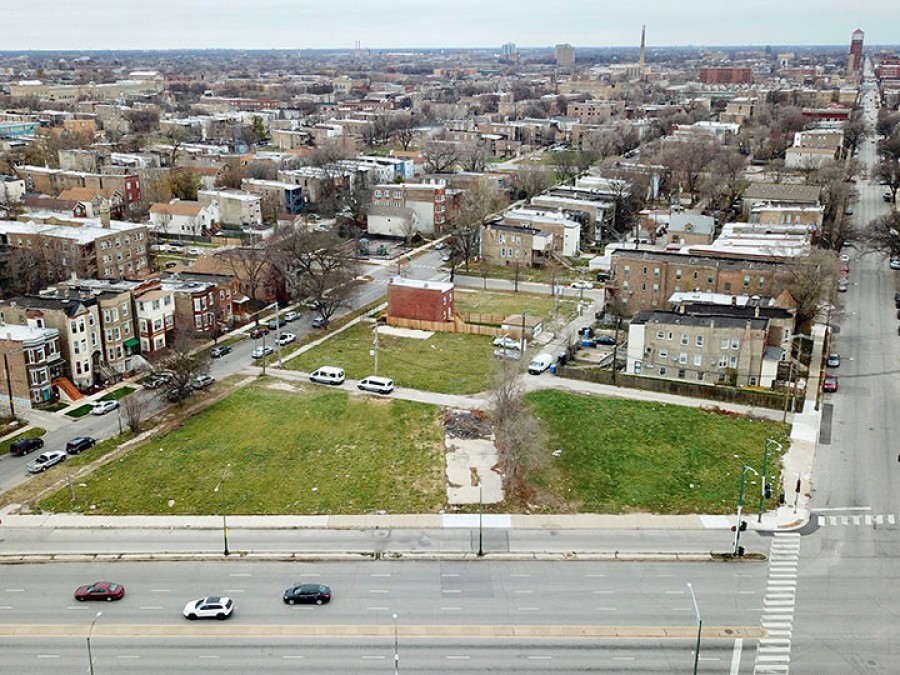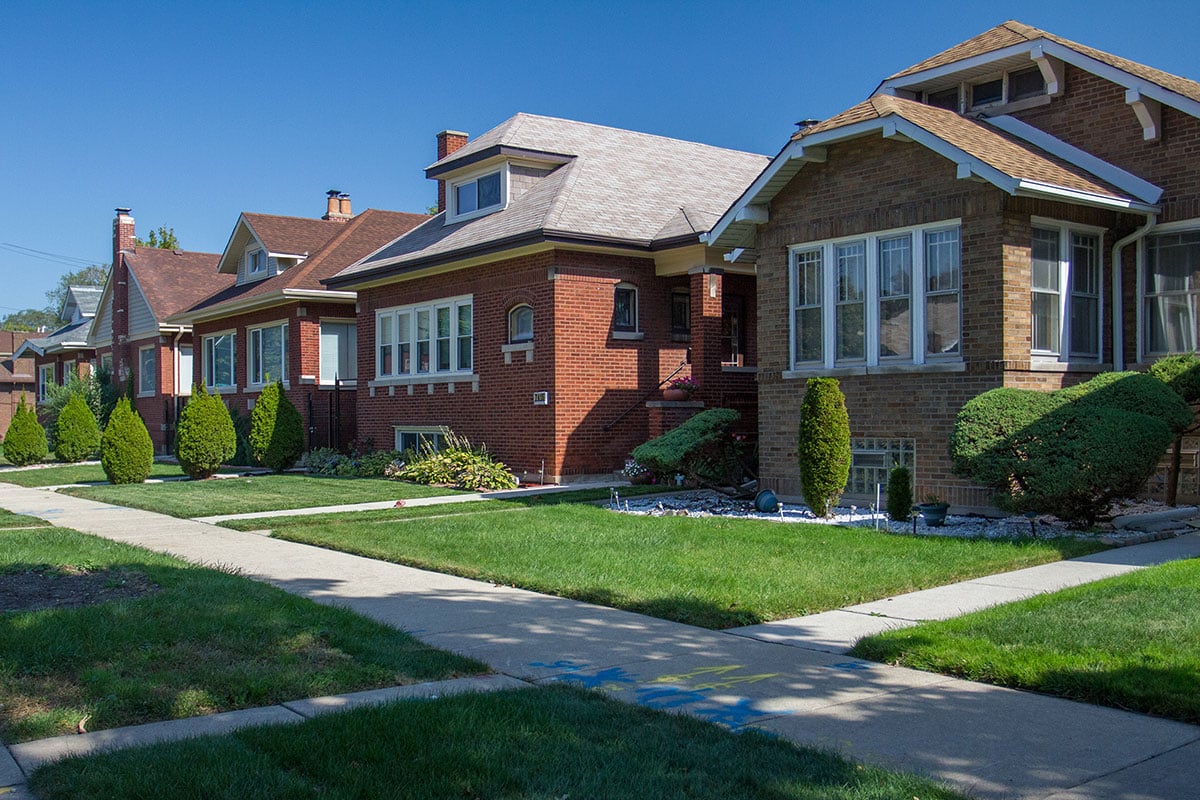Most Dangerous Neighborhoods In Chicago - Behind The Headlines
Explore most dangerous neighborhoods in Chicago, from economic challenges to community resilience. Uncover stories of struggle, initiatives for change, and holistic approaches to urban development.
Author:James PierceReviewer:Paolo ReynaJan 24, 20245.3K Shares144.5K Views
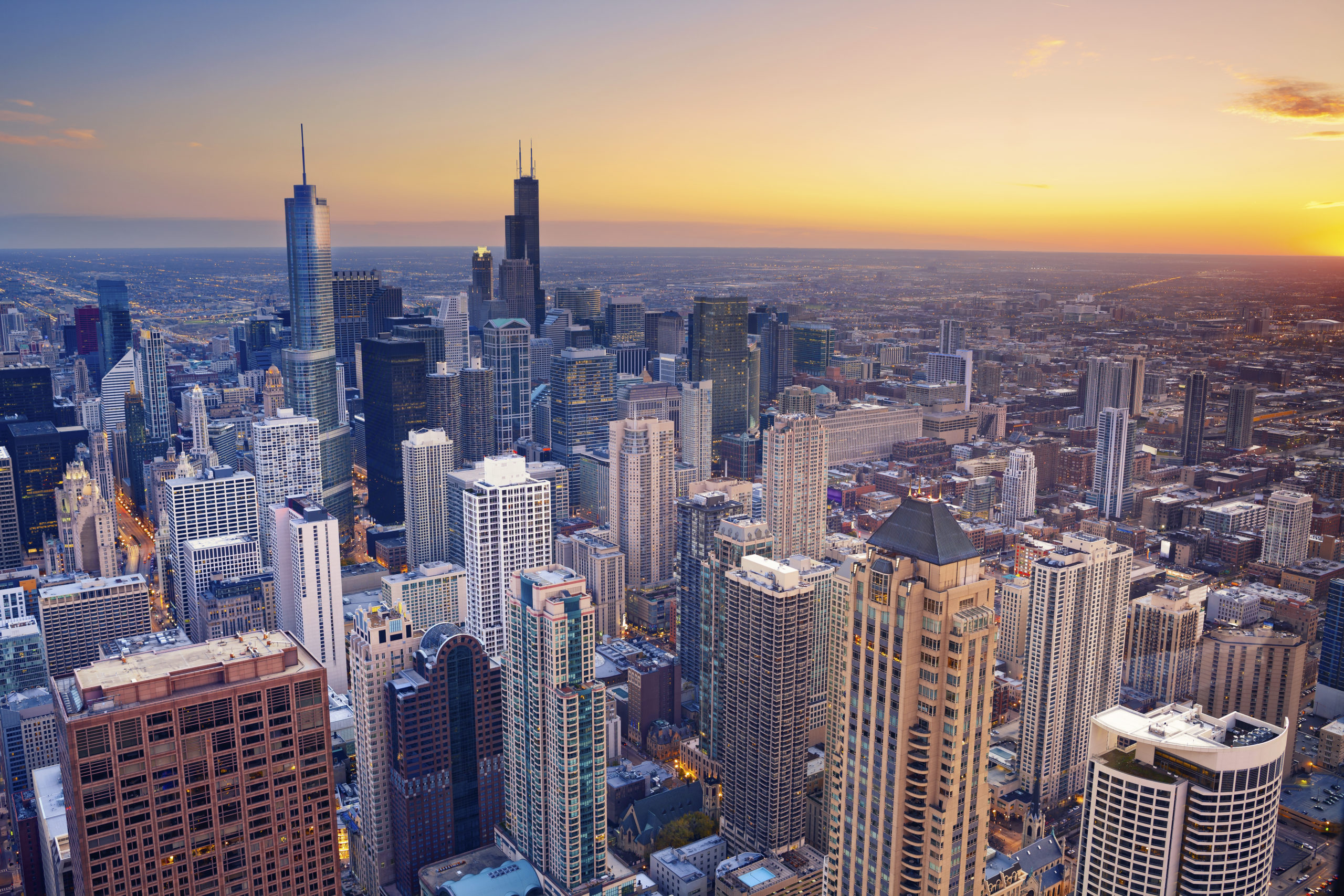
Chicago, renowned for its cultural vibrancy, also grapples with challenges, particularly in certain neighborhoods. This discussion delves into some of the most dangerous neighborhoods in Chicagooften associated with higher crime rates, examining the complex factors contributing to their struggles.
Chicago has a reputation for being fun in the summer, cold in the winter, sports, entertainment, food, and diversity. However, crime has hurt that image. However, the Chicago Police Department said that the number of killings and murderswas lower in 2023 than the year before. Here are some of the most dangerous neighborhoods in Chicago:
Englewood
Nestled on Chicago's South Side, Englewood tells a tale of resilience amid adversity. Though the neighborhood has become synonymous with crime, it's imperative to peel back the layers and understand the historical, demographic, and economic factors contributing to its challenges.
Englewood is also one of the worst places to live in Chicago. There are 24,369 people living in this neighborhood on Chicago's South Side. A relatively high number of people in Englewood live below the poverty line.
Englewood had a 125% higher crime rate than the rest of Chicago in 2022. A lot of violent crimes happen, like robbery, attack, and robbery. There are also a lot of murders and gun crime in the area, which makes Englewood one of the most dangerous places in Chicago.
Englewood's economic landscape is marked by persistent challenges, including soaring poverty rates and limited access to quality education and employment opportunities. These economic disparities create an environment where residents face barriers to upward mobility, potentially leading to involvement in illicit activities as a means of survival.
Beyond the headlines, Englewood harbors a community committed to change. Grassroots efforts and local organizations are working tirelessly to address the root causes of issues such as violence, unemployment, and educational disparities. Recognizing the community's dynamics is essential to appreciate the tenacity of residents striving for positive transformation.
West Garfield Park
Situated on Chicago's West Side, West Garfield Park faces its unique set of challenges. Economic decline, coupled with social issues, contributes to a narrative that demands a closer examination of historical context and current dynamics to comprehend the factors influencing crime rates.
West Garfield Park is also one of the most dangerous places to live in Chicago. West Garfield Park, which is on the South Side of Chicago, has an unusually high rate of serious crime. West Garfield Park has 257% more crime than the rest of the city, so there is a 1 in 20 chance that someone will be violently attacked there. West Garfield has a lot of serious crime because there are a lot of gangs in the area.
West Garfield Park has witnessed economic decline over the years, impacting job opportunities and community well-being. The neighborhood's struggles with unemployment and underemployment create an environment where residents may face increased vulnerabilities, potentially leading to crime as a consequence.
Social issues, including systemic racism and discrimination, play a role in shaping the narrative of West Garfield Park. Understanding the challenges faced by marginalized communities within the neighborhood provides insights into the complex interplay of historical injustices and present-day struggles.
Within the fabric of West Garfield Park lies a resilient community. Despite the challenges, residents are actively engaged in efforts to uplift the neighborhood. Community-led initiatives, such as youth mentorship programs and collaborative neighborhood watch projects, showcase the determination to break the cycle of crime and build a safer, more prosperous community.
North Lawndale
North Lawndale, a historic neighborhood on Chicago's West Side, faces the complex issue of being categorized among the city's most dangerous areas. Economic struggles, high crime rates, and systemic challenges characterize this community. Poverty, unemployment, and limited educational opportunities contribute to an environment where residents confront significant hardships.
Another very dangerous area of Chicago is North Lawndale. North Lawndale was an area on Chicago's West Side that was growing and changing, but the 2008 recession had a big impact on it. There are 34,794 people living in the neighborhood, and about 70% of guys aged 17 to 45 in North Lawndale are thought to have a criminal record.
This is 198% more crime in North Lawndale than in Chicago as a whole (10,606 crimes per 100,000 people). In other words, there is at least a 1 in 9 chance that someone will be killed in a crime. Also, 3,003 violent crimes happened for every 100,000 people in 2020. That means that every person has a 1 in 34 chance of being a victim of a violent crime.
Despite the pervasive challenges, North Lawndale is not defined solely by its crime statistics. Community-driven initiatives, grassroots organizations, and residents dedicated to positive change are actively working to address root causes. These efforts encompass economic development, education, and fostering a sense of community resilience.
While North Lawndale grapples with ongoing concerns, it is important to recognize the multifaceted nature of the neighborhood and the determination of its residents to overcome adversity and create a safer, more vibrant community.
South Shore
The South Shore neighborhood, situated along the picturesque shores of Lake Michigan on Chicago's South Side, has garnered attention due to its classification among the neighborhoods with higher crime rates. However, a thorough examination reveals a multifaceted narrative that extends beyond the label of being one of the "most dangerous" neighborhoods in Chicago.
South Shore is a neighborhood on the south side of Chicago with 54,000 people. It is famous for its beaches along the Great Lakes. South Shore has a crime rate of 7,573 crimes per 100,000 people.
This means that 1 in 13 people will become victims of any kind of crime. There are 2,454 violent crimes for every 100,000 people, and theft and attacks happen a lot. There is a lot more murder and gun crime than in the rest of the country.
There are 5,120 property crimes for every 100,000 people in South Shore. This means that 1 in 20 people will be victims of property crime.
South Shore, like many urban neighborhoods, has faced economic shifts that have influenced crime dynamics. Economic challenges, including job losses and limited economic opportunities, contribute to an environment where crime can proliferate. It is crucial to understand the intersection of economic factors and crime rates, recognizing the impact of disinvestment on the overall well-being of the community.
Despite the challenges, South Shore is characterized by a community that refuses to be defined solely by crime statistics. Residents, local organizations, and community leaders actively engage in efforts to address root causes and uplift the neighborhood. Grassroots initiatives focusing on education, employment, and community building underscore the determination to overcome adversity and build a stronger, safer South Shore.
One significant aspect influencing crime rates in South Shore is the presence of educational disparities. Limited access to quality education and extracurricular activities can leave youth with fewer opportunities and increase the risk of involvement in criminal activities. Recognizing this, community-driven initiatives are working to bridge the educational gap, providing mentorship programs and skill-building activities to empower the younger generation.
Amid the challenges, South Shore has witnessed positive shifts and glimpses of a more promising future. Redevelopment projects, investments in community infrastructure, and collaboration between local government and residents contribute to a sense of optimism. These positive shifts indicate a commitment to long-term change, emphasizing the potential for transformation and revitalization within the neighborhood.
Root Causes Of Crime In Urban Areas
Crime is a complex and multifaceted issue that manifests differently across various urban landscapes. To effectively address and reduce crime rates, it is crucial to delve into the root causes that contribute to criminal behavior within urban areas. This analysis considers socioeconomic factors, systemic issues, and historical context that shape the environment in which crime emerges.
Poverty And Economic Inequality
One of the primary contributors to crime in urban areas is poverty. Poverty creates an environment where individuals struggle to meet their basic needs, leading to desperation and a higher likelihood of engaging in criminal activities. Limited access to quality education and job opportunities exacerbates the problem, creating a cycle of poverty that is challenging to break.
Education Disparities
The lack of access to quality education is a pervasive issue in many urban areas. High crime rates often correlate with neighborhoods where educational resources are scarce, perpetuating a cycle of limited opportunities. Individuals without access to proper education may face challenges in finding stable employment, increasing the likelihood of turning to criminal activities.
Systemic Racism And Discrimination
Urban areas frequently grapple with systemic racism and discrimination, which disproportionately affect marginalized communities. When certain populations face systemic barriers, including discriminatory policies and practices, it can lead to feelings of disenfranchisement and frustration. In turn, some individuals may resort to criminal behavior as a means of rebellion or survival in the face of systemic injustice.
Unemployment And Underemployment
High rates of unemployment or underemployment contribute significantly to crime in urban areas. When individuals struggle to secure stable and gainful employment, they may turn to illegal activities as a means of survival. Addressing unemployment through targeted job creation and skills development programs is essential in breaking the link between joblessness and crime.
Lack Of Access To Mental Health Services
Mental health issues are often overlooked as contributors to criminal behavior. In urban areas where access to mental health services is limited, individuals with untreated mental health conditions may engage in criminal activities due to a lack of support and coping mechanisms. A comprehensive approach to crime prevention must include improved access to mental health services and destigmatization of mental health issues.
Drug Abuse And Addiction
Substance abuse, particularly drug addiction, is closely tied to criminal behavior in urban areas. The illegal drug trade often thrives in impoverished neighborhoods, leading to increased violence and property crime. Addressing the root causes of drug addiction through education, rehabilitation, and support services is crucial for breaking the cycle of drug-related crime.
Family Structure And Social Support
The breakdown of family structures and a lack of social support contribute to youth involvement in criminal activities. Children and adolescents growing up in unstable environments may turn to gangs or criminal networks for a sense of belonging and protection. Strengthening family structures and providing community-based support can play a pivotal role in preventing youth involvement in crime.
Urban Planning And Infrastructure
The physical environment plays a significant role in crime rates. Poorly designed urban spaces with inadequate lighting and limited surveillance can become hotspots for criminal activities. Urban planning that prioritizes safety, community engagement, and the creation of public spaces can contribute to crime prevention by fostering a sense of community and discouraging illicit activities.
Police-Community Relations
Distrust between law enforcement and the community can hinder crime prevention efforts. Positive police-community relations are essential for effective policing strategies. Building trust through community policing, transparency, and accountability measures can lead to collaborative efforts in addressing crime while respecting the rights and dignity of residents.
Most Dangerous Neighborhoods In Chicago - FAQs
What Is The Highest Crime Area Of Chicago?
- North Lawndale.
- Englewood.
- West Garfield Park.
- Grand Crossing.
- Austin.
- West Englewood.
- East Garfield Park.
- Washington Park.
What Initiatives Are Being Taken To Address The Challenges Faced By Englewood Residents In Chicago?
Various initiatives, both grassroots and institutional, aim to address challenges in Englewood, focusing on economic development, education, and community empowerment.
How Do Structural Problems Impact Crime Rates In Chicago Neighborhoods?
Structural problems, such as a lack of affordable housing and limited access to quality education, contribute to higher crime rates in neighborhoods like West Garfield Park, highlighting the need for systemic solutions.
What Role Do Community-led Initiatives Play In Addressing Challenges In Chicago Neighborhoods?
Community-led initiatives are crucial in fostering positive change, addressing root causes, and empowering residents to actively contribute to the improvement of their neighborhoods.
How Can A Holistic Perspective Help In Understanding And Addressing Issues In Chicago's Diverse Neighborhoods?
Taking a holistic perspective involves considering the complex interplay of economic, social, and educational factors, providing a more comprehensive understanding that is essential for developing effective solutions and promoting positive change.
How Safe Is Downtown Chicago?
In general, the center area is safe. Like in any other city, common sense wins out. The parts of Chicago that tourists usually go to are safe. Of course, you should be smart since Chicago is a big city.
Conclusion
Wrapping up the discussion of the most dangerous neighborhoods in Chicago with a reminder of the importance of approaching conversations about dangerous neighborhoods with sensitivity. Acknowledging the resilience of these communities and the need for comprehensive solutions that address root causes beyond surface-level issues is essential for fostering positive change in Chicago's diverse neighborhoods.

James Pierce
Author

Paolo Reyna
Reviewer
Latest Articles
Popular Articles
